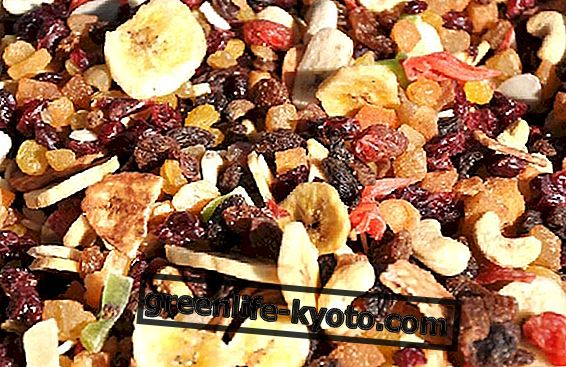
The Kefir (a term that derives from the Turkish keif, means, not surprisingly, feeling good ). It is a slightly acid food that is obtained from fresh fermented milk .
The type of milk used can be of animal origin (cow, sheep) or vegetable (soy, rice, almond, coconut, oats).
However, kefir can be prepared using only water . Kefir has significant beneficial properties.
These are mainly due to the high content of live lactic acid bacteria that help to balance the intestinal bacterial flora.
Fermentation is mainly due to the presence of particular bacteria and yeasts belonging to the species Lactobacillus, Leuconostoc, Streptococcus and Acetobacter and yeasts of the fermented Lachancea type, Hanseniaospora valbyensis.
These are present in high concentrations in kefir granules, mixed with milk proteins (casein) and incorporated into a polysaccharide called kefiran.
The kefir granules have the consistency of gelatinous crystals and a yellowish white color.
The presence of lactic ferments gives kefir digestive, intestinal, but also antibiotic properties as they stimulate the production of antibodies for immune defense. The regular intake of kefir helps to regulate the intestinal functions preventing constipation but also diarrhea as it favors the restoration of intestinal bacterial flora.
The digestive system also benefits because the lactobacilli, the acetobacteria they contain possess an antibiotic action able to counteract the establishment of harmful germs in the digestive tract.
Kefir has remarkable nutritional properties thanks to its content of B vitamins (cobalamin, folic acid, thiamine, niacin, biotin, riboflavin, pyridoxine), vitamin K which is not present in other foods, minerals such as calcium, magnesium, phosphorus and potassium.
The caloric intake varies according to the type of milk used: kefir made from goat's milk has a higher caloric intake ( about 108 Kcal ) than kefir prepared for example with soy milk (about 45 Kcal ). Water-based kefir is the least caloric of all ( around 20 Kcal ).
Kefir does not contain gluten and therefore can be consumed without problems even by celiacs. Kefir is well tolerated even by those who do not digest lactose because, during fermentation, lactose is consumed by the beneficial bacteria present in it, transforming it into lactase (an enzyme that makes milk digestible for those who are intolerant).
How to prepare kefir
Kefir can easily be prepared at home. You can do the milk kefir, but also water kefir . The milk kefir is prepared with 2 tablespoons of milk kefir granules and half a liter of milk at room temperature, chosen from among those that you prefer (vegetable or animal), a glass jar.
Preparation
The kefir granules are put in the glass jar and the milk is poured gradually: close the container with the cap (but not completely closed to let "" breathe "the kefir") or with a cloth and place it in a place at room temperature. It is necessary to leave it to ferment for 48 hours, time necessary to obtain the right curdling of the milk, then filter the kefir, so as to separate the granules from the fermented milk, keep in the fridge for no more than a week.
Water kefir, instead, is prepared using water kefir granules (4 tablespoons), 1 liter of natural water, 30 g of raw sugar, 2 lemon wedges, a dry fruit to taste
(plum, apricot, pineapple, fig, etc.), a cinnamon or vanilla pod, a glass jar. Pour 1 liter of water and sugar into the jar. Mix well to dissolve the sugar.
Add the kefir grains, the lemon slices and the dried fruit and the vanilla pod (or cinnamon). Leave the container closed, with a stopper or a stopper or a cloth to ferment for 48 hours, at room temperature.
After the fermentation time has passed, filter the kefir, to separate the grains and place it in the refrigerator. Kefir grains can be used continuously. In fact, after filtration they can be used again by putting milk (or water) to prepare more kefir and so on.
If you do not want to use them for a certain period, they can be stored in a vacuum-sealed bag in the freezer and at the time of re-use, just leave them in the milk for 48 hours, rinse them and proceed with the usual preparation of kefir.













